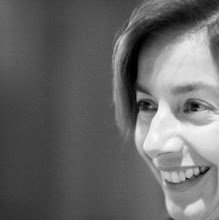Another Lesson From Zen Hospice, About the Power of Seeing and Embracing Suffering.
Sitting with Doug*, a new resident on the ward, I got a confirmation of what it does to consciously be with all of one's experience, including the yucky stuff. It was hard to understand Doug. The tube in his throat helped him breathe, but had the unfortunate effect of muddling his words. Still, we managed. He asked me to turn on the TV. Doug's gaze was intense. I looked at the bare environment around his bed. Not a single personal object in sight. Doug settled on the Bay Area Bargains channel. The topic was home insulation and its benefit for large homes. The talk host, a bouncy middle age woman, took us inside the various rooms of a magnificent mansion, where she excitedly discussed the topic at hand with an expert. Doug seemed unfazed. I, on the other hand, couldn't help but react to the contrast between this place, where Doug and I sat, and that other world that was presented to us. I wondered what Doug felt.
Next to us, with only a thin curtain to separate us, we could hear Diana*, my favorite aide, giving Doug's neighbor his bath. Ears mobilized, and nose also. The smell of dirty diaper taken off, and body being cleansed grabbed me at the nostrils. Sitting with much unpleasantness, I struggled with staying in my spot. "You let me know, whether you want me to stay or leave." I asked Doug. He motioned for me to stay. This is just like sitting meditation, I thought. The trick is in surviving the aversion, without acting on it. And so, I kept on sitting with Doug, until it was time for Diana to take over, and give him his bath.
Several more times throughout my shift, I encountered the unpleasantness, and I saw it for what it was. The opportunity, each time, to go against the grain of deeply ingrained habit, that causes me to want to flee what does not feel good. A day at Zen Hospice is like regular life on steroids. Same suffering, only magnified a thousand times. Same aversion to suffering, only so strong it cannot be ignored. And the obvious conclusion, that the only way out of the suffering is not to try to escape its reality, for that only makes it worse. No, the only way out, is to go deep into the suffering, and the natural aversive response to it, and to breathe with it, to feel it completely, and to embrace it. No cope out. That would defy the whole purpose.
And now, the punch line. Out of the ward, I walked, heart filled with much lightness and joy. Feeling so completely whole.
* Not real name, to protect privacy.









